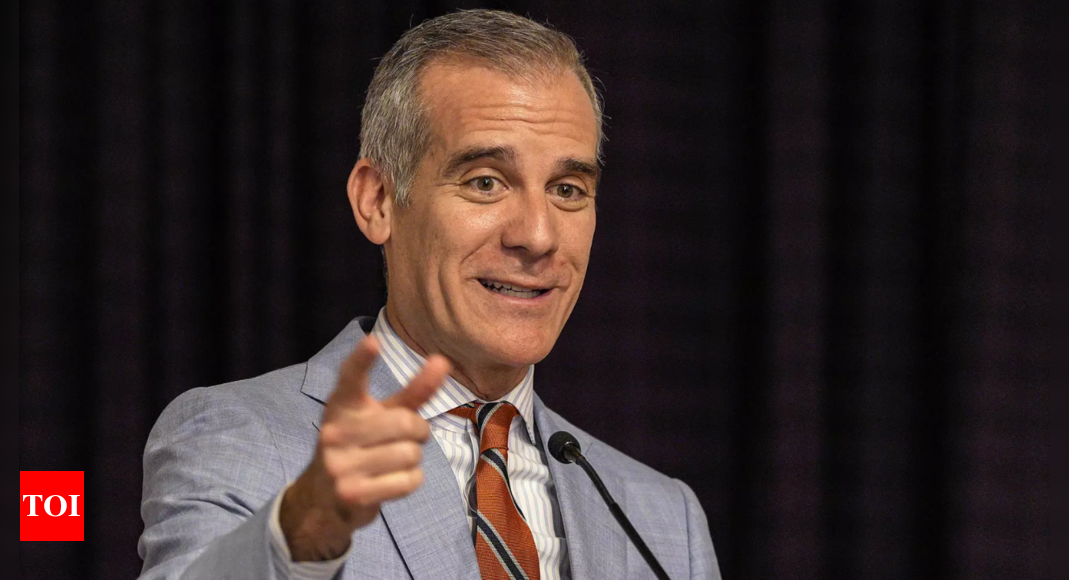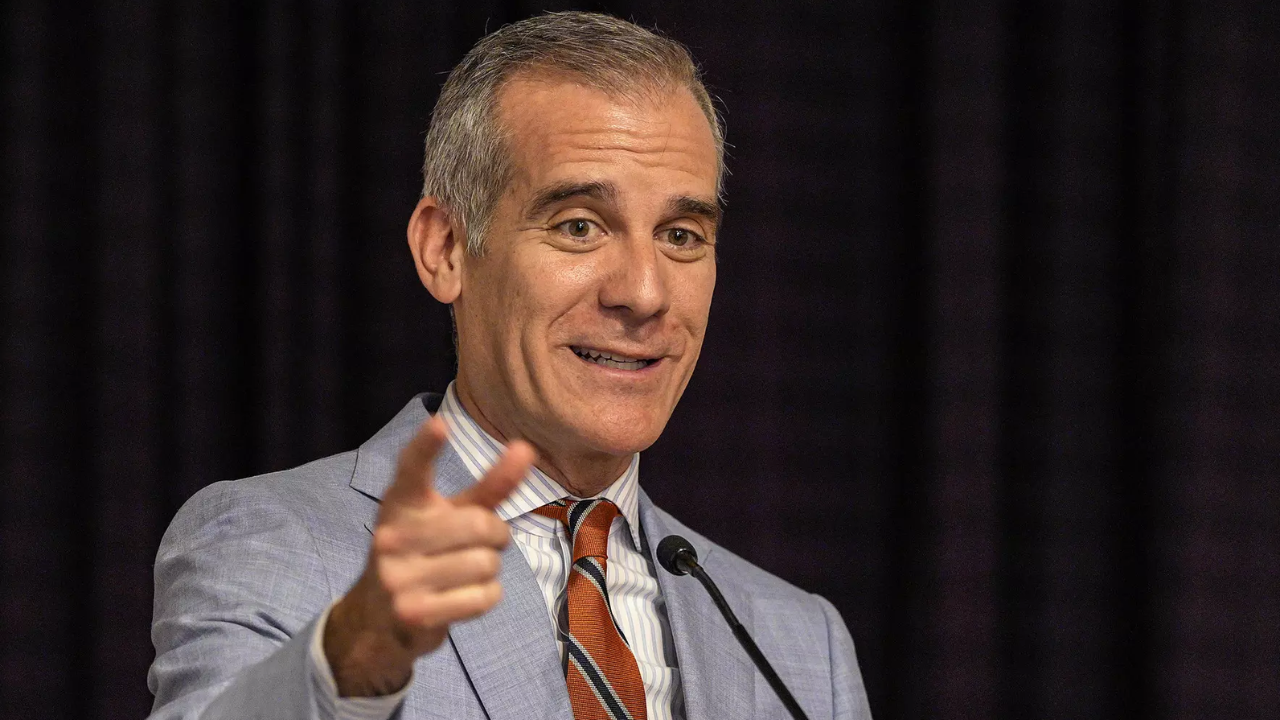[ad_1]
BENGALURU: Isro chairman S Somanath Friday urged big industries in the country to start investing money in the space sector to further PM Modi’s vision of expanding the size of the Indian space economy, while US Ambassador to India Eric Garcetti, hailing India’s contributions in the sector, urged for enhanced partnerships.
The two delivered keynote speeches at the US-India Space Cooperation Conference organised jointly by US Commercial Service (USCS) and US-India Business Council (USIBC).Somanath outlined India’s ambitious space goals, including sending Indian astronauts to the International Space Station (ISS), multiple lunar missions, establishment of the Indian Space Station and more.
Highlighting the longstanding collaboration between the two countries in space endeavours since the beginning of the space era, Somanath expressed confidence that the supportive leadership in both nations will propel joint efforts to establish a sustainable lunar presence. India aims to land its own astronauts on the Moon by 2040.
Pointing out that reforms in India’s space sector since 2020 have enabled the emergence of new players, including startups and industries, Somanath called for increased investment from major Indian industries in space activities like manufacturing rockets and satellites through public-private partnerships, similar to models adopted in the US.
He emphasised leveraging the huge data repository from Indian satellites for applications across sectors like agriculture, insurance and disaster management to create business opportunities. Plans are underway to open up this data for public access and utilisation.
The talk of deepening Indo-US space ties also includes providing access for American payloads and experiments on future Indian lunar missions, fostering knowledge sharing and facilitating instrument development from both sides.
As the space economy grows in India, the countries aim to collaborate on cutting-edge research aboard space stations in areas like medicine, chemistry and material sciences in microgravity conditions.
US Ambassador to India, Eric Garcetti, hailed the deepening space cooperation between India and the US, calling it a “multiplicative relationship” between the two largest democracies. Garcetti highlighted the numerous joint projects spanning from the seabed to outer space that were announced during PM Narendra Modi’s state visit to the US last year.
“We were not dealing with five or ten projects, but 173 separate projects that extended from the seabed to the stars,” Garcetti said. The Ambassador announced that the US will soon provide advanced training to Indian astronauts in a joint effort to send an Indian to the ISS. He also mentioned the upcoming launch of the Nasa-Isro joint satellite NISAR to monitor Earth’s resources and climate change.
Stating that Chandrayaan-3 embodied “a nation’s joy and the world’s hope”, he said Isro chairman Somanath was an inspiration.
He invited Indian space companies to the select USA investment summit next month, while likening the India-US partnership to a brilliant constellation. He urged both sides to “turn to the heavens” and explore space together to understand humanity’s role in the broader universe.
The two delivered keynote speeches at the US-India Space Cooperation Conference organised jointly by US Commercial Service (USCS) and US-India Business Council (USIBC).Somanath outlined India’s ambitious space goals, including sending Indian astronauts to the International Space Station (ISS), multiple lunar missions, establishment of the Indian Space Station and more.
Highlighting the longstanding collaboration between the two countries in space endeavours since the beginning of the space era, Somanath expressed confidence that the supportive leadership in both nations will propel joint efforts to establish a sustainable lunar presence. India aims to land its own astronauts on the Moon by 2040.
Pointing out that reforms in India’s space sector since 2020 have enabled the emergence of new players, including startups and industries, Somanath called for increased investment from major Indian industries in space activities like manufacturing rockets and satellites through public-private partnerships, similar to models adopted in the US.
He emphasised leveraging the huge data repository from Indian satellites for applications across sectors like agriculture, insurance and disaster management to create business opportunities. Plans are underway to open up this data for public access and utilisation.
The talk of deepening Indo-US space ties also includes providing access for American payloads and experiments on future Indian lunar missions, fostering knowledge sharing and facilitating instrument development from both sides.
As the space economy grows in India, the countries aim to collaborate on cutting-edge research aboard space stations in areas like medicine, chemistry and material sciences in microgravity conditions.
US Ambassador to India, Eric Garcetti, hailed the deepening space cooperation between India and the US, calling it a “multiplicative relationship” between the two largest democracies. Garcetti highlighted the numerous joint projects spanning from the seabed to outer space that were announced during PM Narendra Modi’s state visit to the US last year.
“We were not dealing with five or ten projects, but 173 separate projects that extended from the seabed to the stars,” Garcetti said. The Ambassador announced that the US will soon provide advanced training to Indian astronauts in a joint effort to send an Indian to the ISS. He also mentioned the upcoming launch of the Nasa-Isro joint satellite NISAR to monitor Earth’s resources and climate change.
Stating that Chandrayaan-3 embodied “a nation’s joy and the world’s hope”, he said Isro chairman Somanath was an inspiration.
He invited Indian space companies to the select USA investment summit next month, while likening the India-US partnership to a brilliant constellation. He urged both sides to “turn to the heavens” and explore space together to understand humanity’s role in the broader universe.
[ad_2]
Source link



